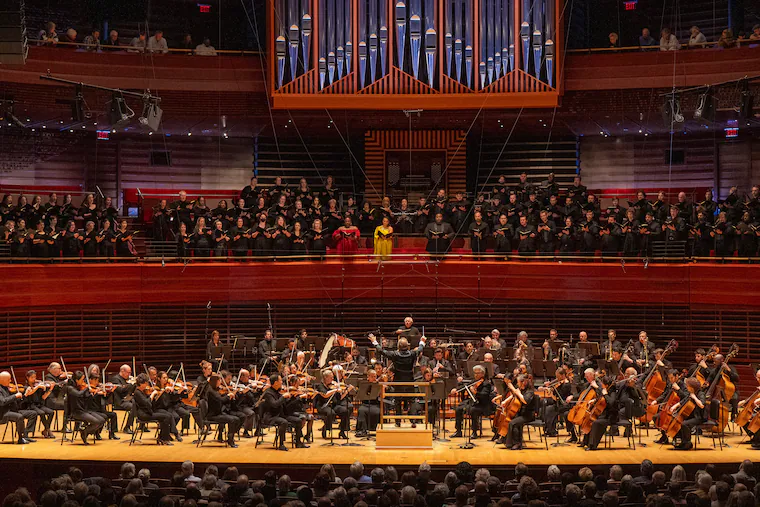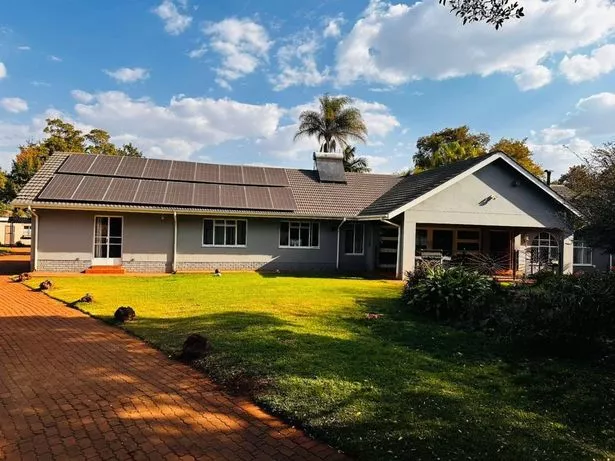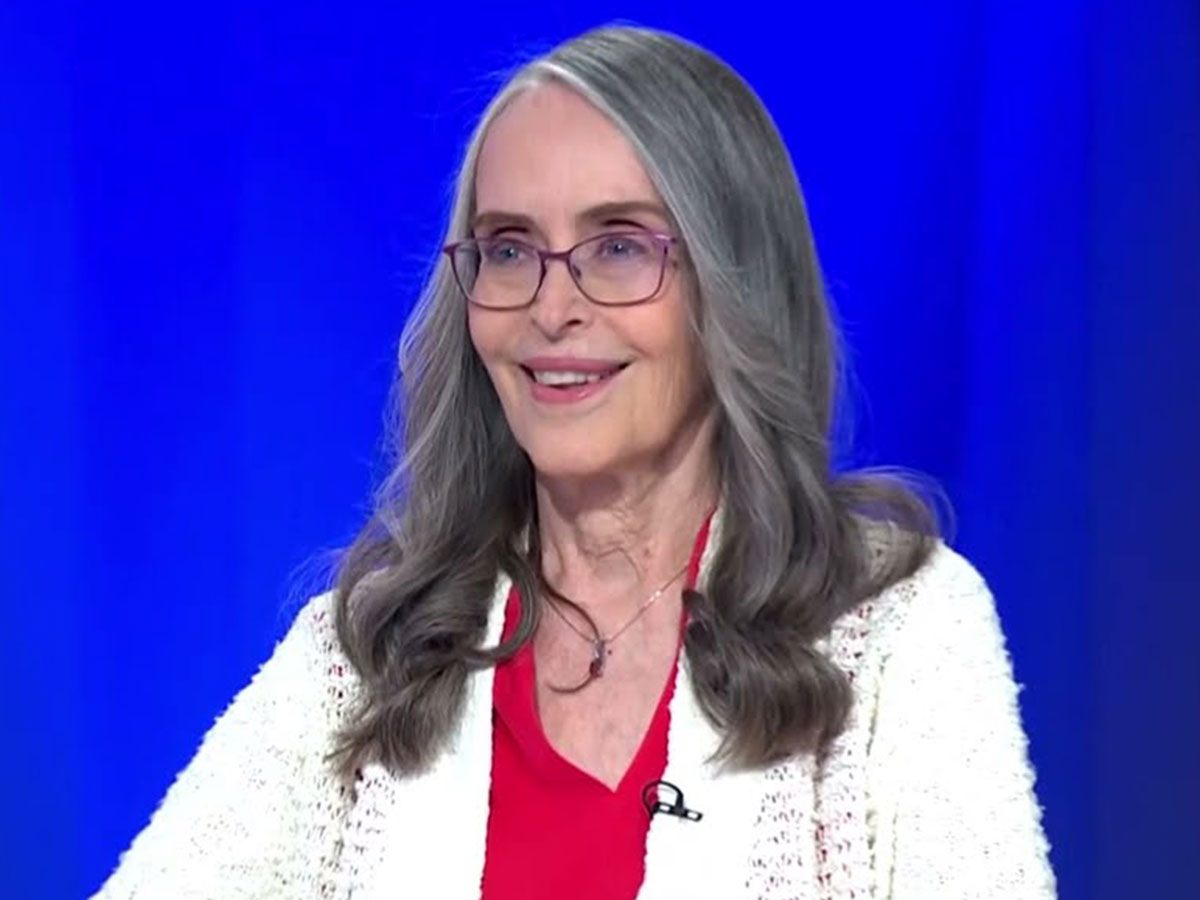
The Philadelphia Orchestra once seemed like a test case for everything that can go wrong with an orchestra: labor strife, a financial crisis in 2011 that made the ensemble the first major U.S. orchestra to file for bankruptcy, and the musical chairs of three chief conductors over five years in the 2000s that created artistic uncertainty.
But now the city’s flagship arts group has notched a major milestone in a remarkable turnaround: Quietly over the last several years, the Philadelphia Orchestra and Ensemble Arts has raised $305 million toward a $330 million goal, with almost another year to go in the campaign, the group announced Thursday.
When the season opens Thursday night in Marian Anderson Hall with pianist Yuja Wang in Ravel, the orchestra will be backed by a new sense of momentum. For one thing, audiences have returned. Attendance has exceeded its pre-pandemic levels, rising from 47% of seats filled by paying patrons in the pandemic-stricken 2021-22 season to 75% in 2024-25.
Perhaps just as encouraging, younger audiences — the Holy Grail of every arts group — are turning out. Between 2019 and 2024, the number of orchestra listeners 59 and under has increased by 78%.
That’s no accident. The orchestra has changed its programming mix to be, essentially, all things to all people. For every Verdi Requiem there’s a Muppets Christmas Carol played live to screen. A new relationship with Spirited Away composer and conductor Joe Hisaishi has made a deep emotional connection to a new demographic.
At the same time, the orchestra continues the Tchaikovsky, Sibelius, and Brahms, as well as works dealing with social justice and climate change.
The proceeds of the $330 million campaign are allowing the organization to use a word that may not be sexy, but has often been frustratingly elusive — stability.
“It has been providing and will continue to provide incredible stability,” said Ryan Fleur, who was promoted to president and CEO of POEA in April after more than a dozen years there in other roles. Groups like the orchestra are never totally home free financially, “because a modest deficit can turn very big very quickly if we’re not careful,” Fleur said. “But we’re at a point where we can start dreaming a bit.”
The campaign began in 2019 with a bang — an anonymous $55 million gift that was one of the largest ever to an orchestra. The fund drive survived the pandemic, and, after the 2021 merger of the orchestra and the Kimmel Center, the fundraising activities of the two groups fused, and the monetary goal and case for support grew.
“We have a million people that walk through our doors each year, and we have more than 2,500 performances and events between what we curate ourselves, what we present, and when others are using our buildings [including rental events],” Fleur said.
The spin-off from the entire organization supports nearly 4,000 jobs each year, he said, and “just in Philadelphia alone, there’s an economic impact of over $400 million.”
Fundraisers can also boast that the orchestra has achieved artistic stability. Thursday night marks the beginning of Yannick Nézet-Séguin’s 14th season as chief. That’s a tenure already longer than those of Riccardo Muti and Wolfgang Sawallisch.
Much of the $330 million being raised has been spent or is already spoken for — for instance, the $140 million brought in for operations through the orchestra’s regular annual giving campaign over seven years projected to end Aug. 31, 2026.
But some of the $330 million will be kept in perpetuity: $100 million in gifts for the orchestra’s endowment, and $5 million for Kimmel Center endowment. Money in endowment earns investment income each year, which means around 5% of it is typically spent, preserving the principal.
In addition, about $40 million to be raised has gone or will go toward capital projects such as improvements to the Miller Theater, restoration of the Academy of Music, repairing the Kimmel Center’s leaky glass dome, and renovating the Kimmel’s plaza, which has often been less welcoming and active than leaders and others would like.
“We’re thinking not only about the acoustic of the space, but the placement of the stage” and other components in the areas outside of Marian Anderson Hall and the Perelman Theater, Fleur said. “Only in rare moments do we live up to the potential of the plaza being an extension of Broad and Spruce.”
Planning is underway, the project is funded, and construction penciled in for summer 2026.
Educational and community programs at the orchestra and Kimmel will get $30 million, and an additional $20 million is or was earmarked for special artistic initiatives such as last season’s Tristan und Isolde, a new work from Wynton Marsalis this season, and other projects.
» READ MORE: Philadelphia Orchestra reveals season-long 125th birthday bash
These are often the kind of artistic tests that keep the orchestra on its mettle and grab headlines burnishing the orchestra’s reputation — “a finely wrought, fully realized performance of Tristan that will reside in my mind as one of the greatest things I’ve ever heard,” wrote the Washington Post’s music critic in a review of the Wagner opera.
The Kimmel Center, a quarter of a century old, is in need of repairs to parts of the building like its vast glass dome, which leaks badly in spots.
“When the rain comes, the leaks happen, and they happen in unpredictable places,” Fleur said. The orchestra has found an immediate solution for some of the problems, and, if it can raise the money, a more permanent fix.
The vault has not had a washing since 2017.
“It will look completely different when it’s cleaned, and that has an absolute audience experience impact.”
In the education arena, the arts center has set a goal it will measure in visits.
“We want to welcome every Philadelphia student three times in their K-12 journey in one of our buildings, whether it’s coming to an orchestra experience, Philadanco, a Broadway experience, or one of these other education programs.”
As successful as the current campaign has been, another is right behind it.
“One of the things that we’re very cognizant of, and this is just a societal thing, is there’s a huge generational shift happening, and assets are passing from one generation to the next,” Fleur said. “Many arts organizations are seeing this in the form of bequests from longtime patrons. It’s incumbent on us over the next 15 years or so to be present, to inspire people and take advantage of that shift. That’s gonna be one of the main ways that we grow the endowment.”
The combined endowment for the orchestra, Kimmel, and Academy of Music was about $385 million as of Aug. 31, and while that sounds like a healthy nest egg, it should be higher for an organization the size of the Philadelphia Orchestra and Ensemble Arts, with its $125 million annual budget.
For that goal, Fleur has a nice round number in mind.
“We need a billion-dollar endowment,” he said, ”if we’re going to thrive and meet our artistic ambitions and our community ambitions.”



